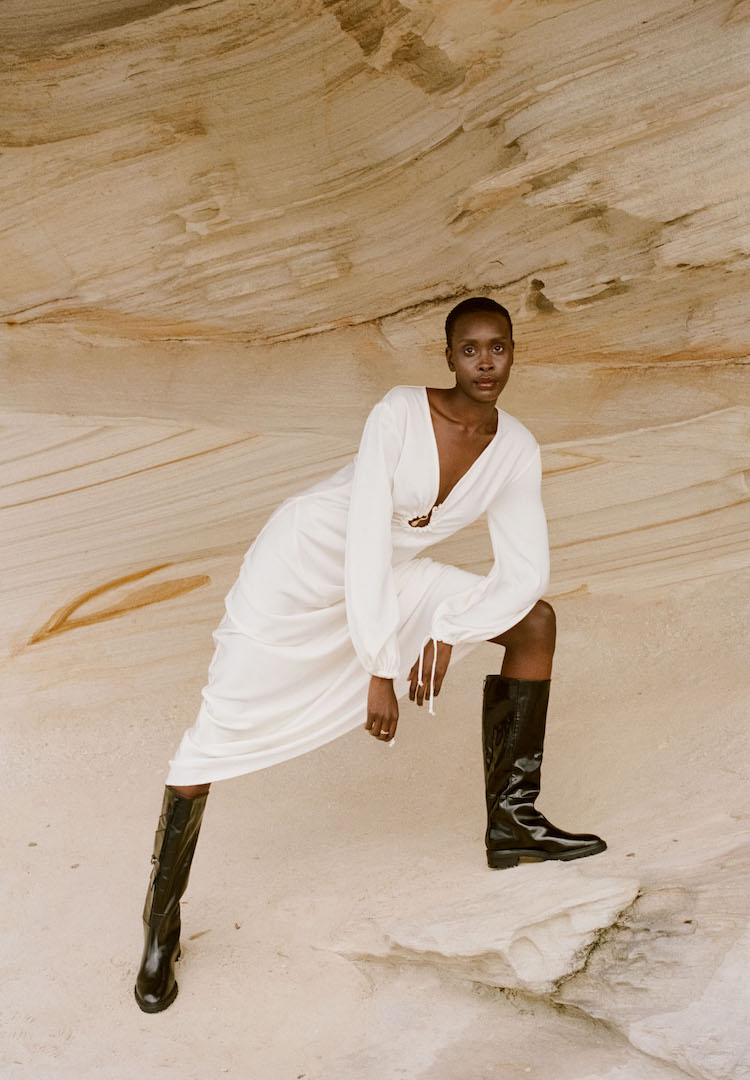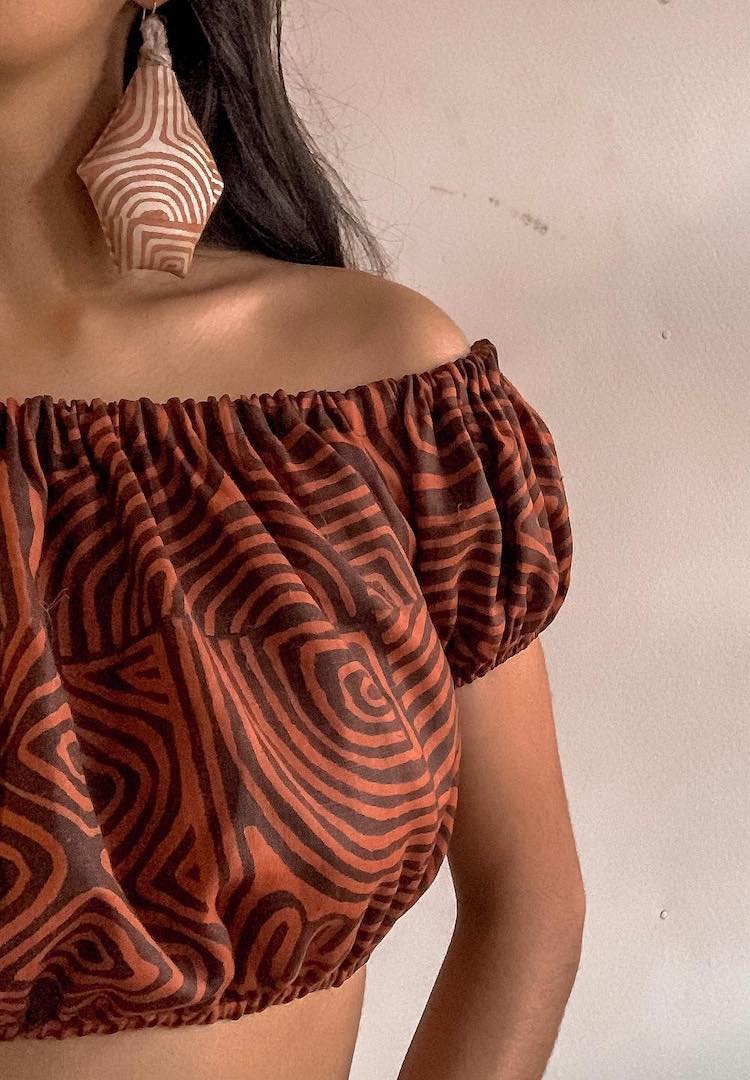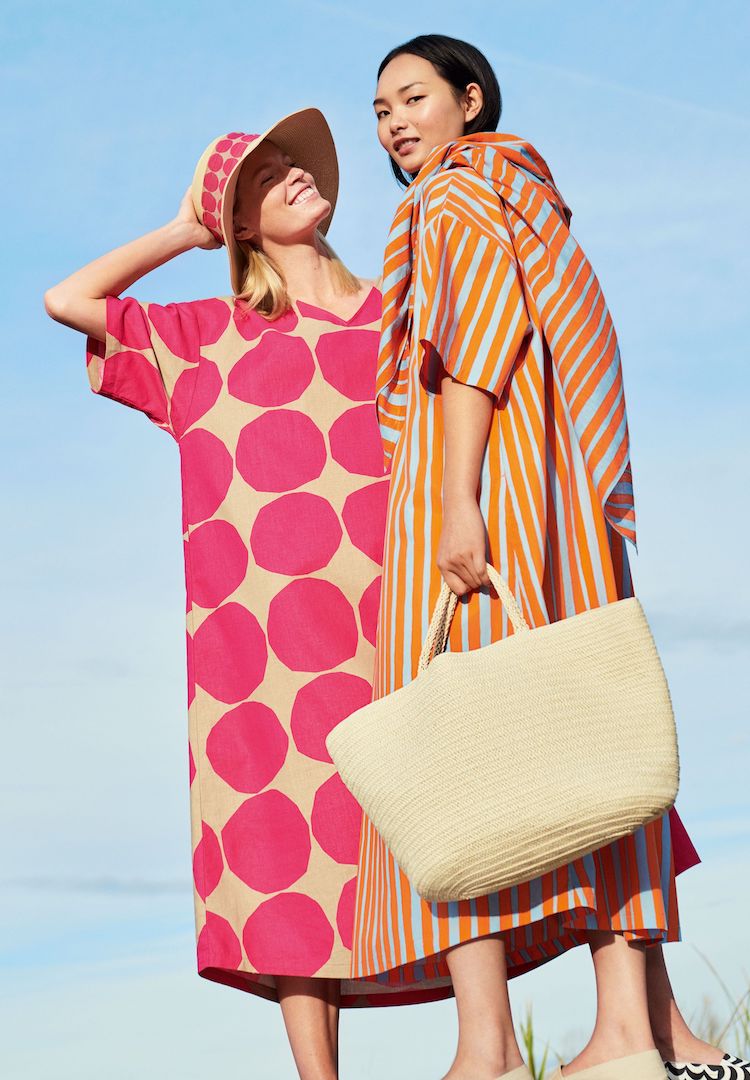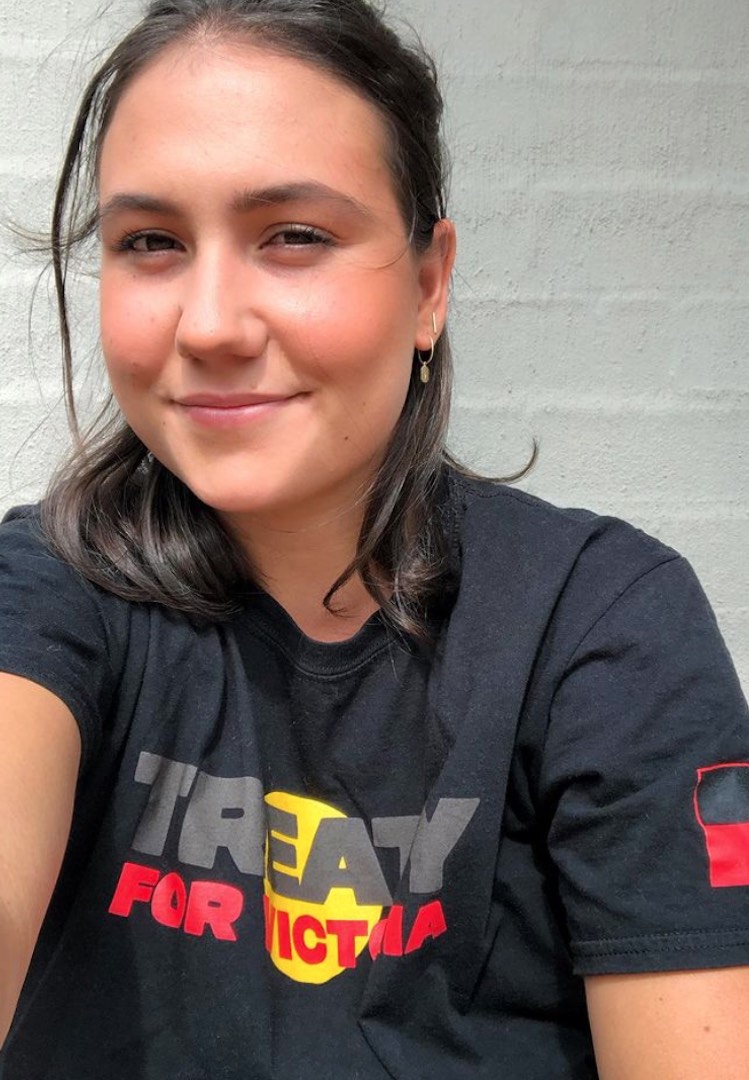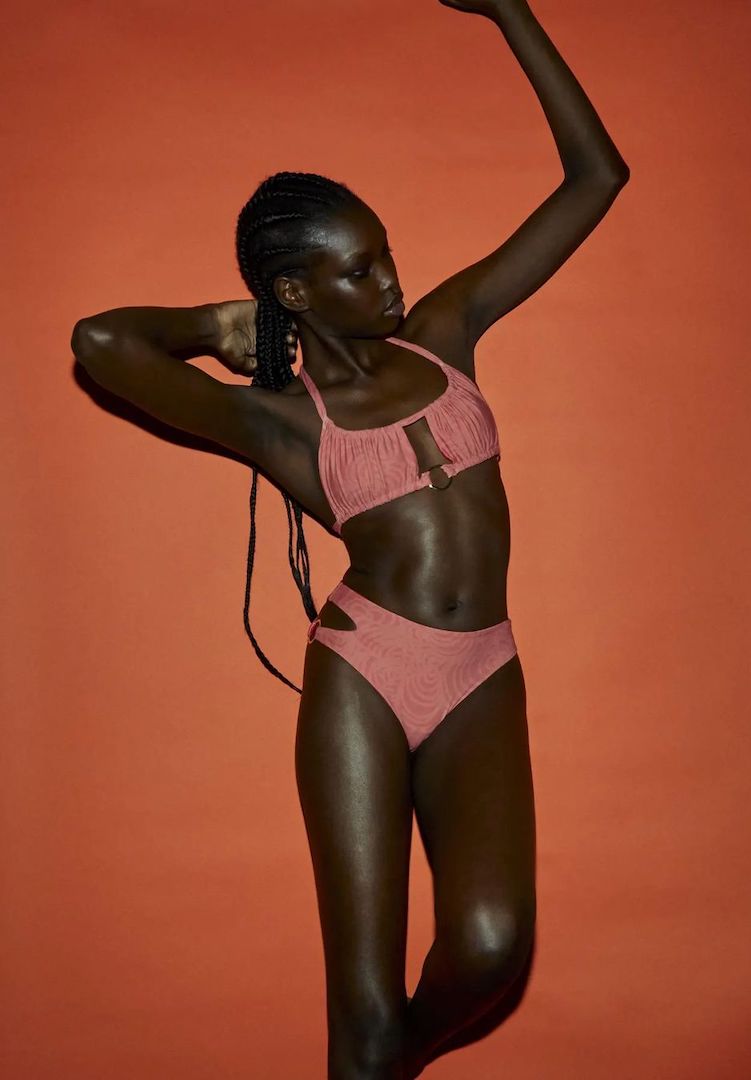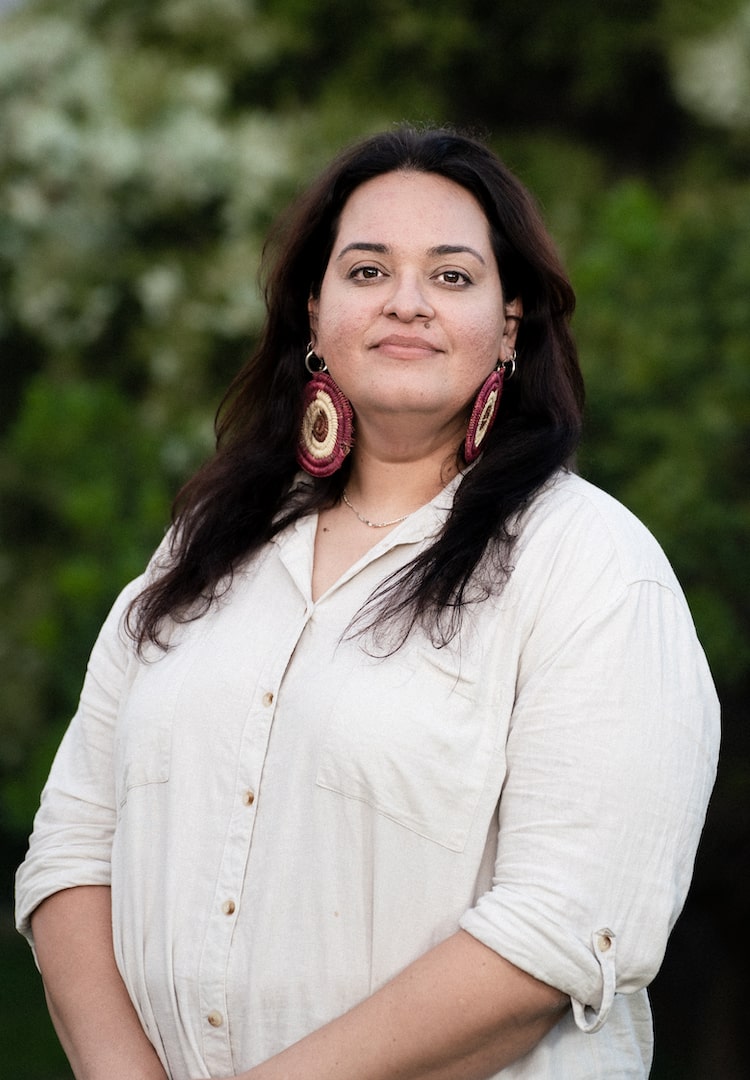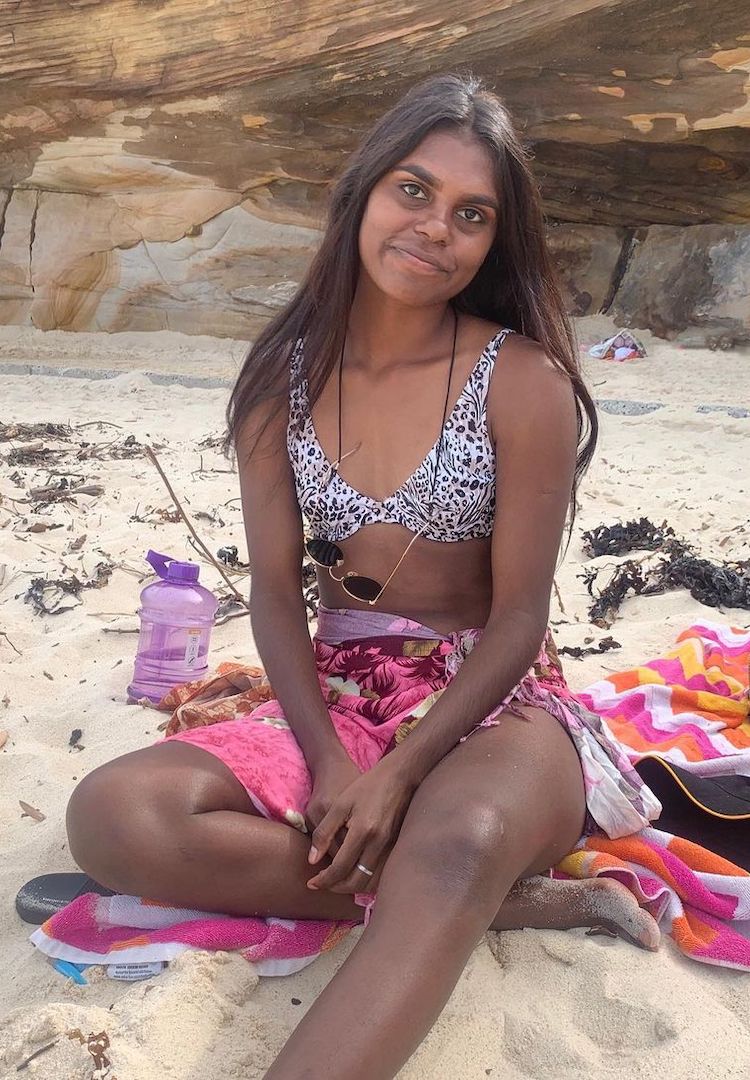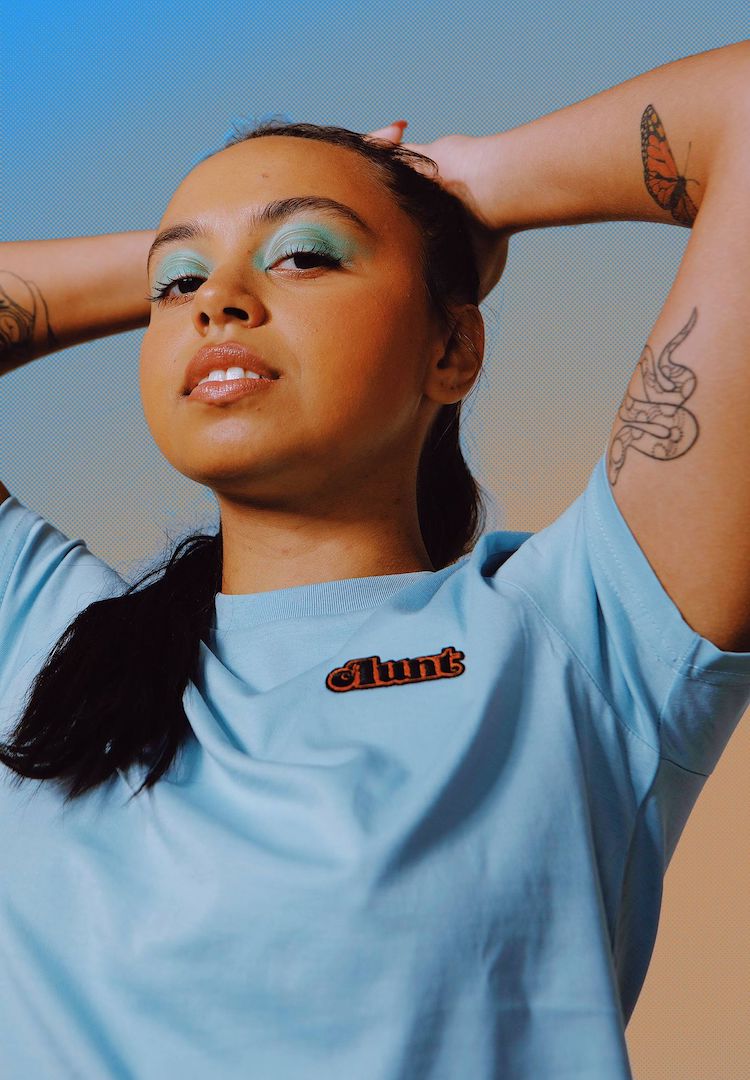Lessons on sustainability that mainstream fashion can take from First Nations designers
WORDS BY NINA FITZGERALD
IMAGES VIA NGARRU MIIMI
Take note.
At Fashion Journal, we’re working with Bank Australia to amplify voices that matter as part of Bank Australia’s ongoing mission to support people and the planet. Here, FJ contributor Nina Fitzgerald speaks with Yatu Widders Hunt, founder of Australian Indigenous Fashion and proud descendant of the Anaiwan and Dunghutti peoples, about what our industry can learn from Indigenous Australian designers.
Sustainability is a buzz word in the mainstream fashion industry right now. It was buzzing around even before the impacts of COVID-19 disrupted supply chains and the processes and production schedules of labels worldwide.
But, as Yatu-Widders Hunt contends, for First Nations Australia, sustainable practices are even older. Much older.
“It’s been practiced in Australia for more than 60,000 years, so I think it can be frustrating to hear it positioned as a really new way of doing things, when it’s actually not,” she says. “When actually the way fashion has been doing things for the last few hundred years is at odds with how things have always been for First Nations people and how they should be.”
There is such a wealth of knowledge First Nations designers can offer to the mainstream fashion industry. But acknowledging the intelligence, intellectual property and inherently sustainable practices of First Nations designers must be done first. This is about building respect for the very fabric of Australia.
“The language and the narrative piece is important – we are not inventing something, we are returning to something that has always existed,” Yatu says. “For Aboriginal designers, caring for each other and caring for country are cultural values. Not separate things. It’s actually embedded and part of everything we do and the way we approach things.”
Yatu speaks to shifting perceptions from what is inherently a Western knowledge system, to one that is instead inclusive of First Nations knowledge. Indigenous knowledge is both rich and resilient. Spanning more than 40,000 years, it relies not on any one resource but the sharing of knowledge systems through generations.
For the mainstream fashion industry, actual listening, hearing, and learning means a major reevaluation of concepts of time. Clothes are pumped out at breakneck speed, with, in many cases, little concern for people or the planet. But for First Nations designers and artists, it is of greatest importance to tread lightly on the earth.
“Some designers I know only make certain garments in certain seasons, because that’s when the flower grows or that’s when the nut is available. It’s completely working in the cycles of the earth rather than the cycles of the industry. And I think that can be quite challenging for the fashion industry. But when done well [it’s] a really beautiful thing. So, it’s the lesson that we don’t actually control the cycle of when materials are available or when it’s appropriate to paint a particular story… we have to give up a little bit of power.”
Take Lillardia Briggs Houston, a Wiradjuri, Yorta Yorta and Gangulu woman and founder of local fashion label, Ngarru Miimi. As in all facets of her life, respect for lands is integral to her work. “I always view myself inextricably connected with country, and this connection will always intertwine with and influence my work. Hurting country is hurting me. It is an extension of my body, and lives and breathes as I do.”
Lillardia therefore ensures her hands touch all elements of her work. Such practices have always been generational. Lillardia’s grandmother would repurpose newspapers into pattern paper and recycle old curtains into fabric. Now, Lillardia prints her own textiles on country by hand, and repurposes waste from the cutting table to ensure it doesn’t end up in a landfill just kilometres from her on Wiradjuri Country. “I do this to ensure I share my story and culture respectfully,” she explains. “If I didn’t, it would go against everything I hold dear in my culture.”
This inherent respect for country is also evident through the work of local swimwear designer, Liandra Gaykamangu. It’s visible across all facets of her brand, Liandra Swim. Her fabrics are made from regenerated plastics and even its hygiene stickers are safe for home-compost disposal.
“Our purpose goes beyond the visual aesthetic. We hope to create authentic discussions around the versatility, resilience, and brilliance of this country and Indigenous people,” says Liandra. “I urge all creatives to continue their education around sustainability and how they can positively uplift Indigenous voices and stories through equally beneficial partnerships.”
Yet another example is Aarli, a streetwear label by designer TJ Cowlishaw. TJ uses upcycled organic remnant fabrics (such as cotton, silk, bamboo and hemp) alongside laser cutting techniques and recyclable and decomposable packaging to ensure there is zero waste in Aarli’s production. The label also recently switched to a made to order model. “I think as next generation fashion designers, it’s our duty to be aware of the many factors – from production elements to fabrication – which all can affect the land, sea and consumer,” notes TJ.
Yatu says that in the First Nations fashion space, collaborations also have a big spotlight. And those coming out of the big brands right now, where art is procured ethically, are undeniably beautiful and creating exciting economic and artistic opportunities for First Nations artists.
Recent notable collaborations have included Lois Hazel’s recent capsule collection with artist Lee-Anne Williams; Mangkaja Arts’ 2019 collection with Gorman, and Gunditjmara and Torres Strait Islander artist Lisa Waup’s ongoing work with Verner. This month has also seen Bared Footwear work with Australian artist Christinaray Weetra across a new style, the Noddy Weetra Dot, with $50 of every pair sold donated to Children’s Ground.
But she also points out that these collaborations are still mostly dictated by the bigger brands and their numerous seasonal drops and production deadlines. Prioritising an Aboriginal-led collaboration, instead, will celebrate ancient knowledge systems and deeply explore the voices and stories of First Nations Australia. This will drive an even stronger message of sustainability for mainstream fashion and broader Australia alike.
“So designers actually go out and learn, and spend time in community, and actually work on our cycles and how community want to drive it in concert with the earth. Through experience, through being on country and telling stories, I think that would be a nice way to get some of those messages through.”
On the other side of the industry, consumers are increasingly demanding more transparency regarding the origins of their clothes at every level of the supply chain. Through her online community, the flourishing Instagram account @ausindigenousfashion, Yatu is bombarded with comments and questions as the public want to know more about the designers, their vibrant works and their diverse stories.
Take Clothing the Gap, for example, whose work aims to raise awareness of the fact the Aboriginal flag is the only flag in the world that exists as a copyrighted work. Or Grace Lillian Lee who aims to preserve traditional techniques, by working with young people from remote communities to develop their art into textiles and adornment in a contemporary way. Or Ngali, who uses clothing and homewares as a vehicle to showcase artworks from remote communities that we might otherwise never see.
“Connecting people to story and meaning is really important, and that is something I personally love about what First Nations fashion and design is, as it’s all about sharing stories and meaning,” she says.
This, Yatu explains, is not only providing the consumer with an appreciation of the practical sustainable actions that have been taken in the design process. It also helps to build a stronger appreciation of the garment, which supports people to take better care of it and value it in a different way. And most importantly, to consume less.
“There are probably two angles. One is making sure that consumers know that this [garment] has been [produced] in a way that that is sustainable. But it’s also encouraging them to act sustainably in the way that they consume, by connecting them more [closely] to the piece.”
Connecting to clothes, lies in connecting to people and the planet. Just listen to Australia’s brilliant First Nations fashion creatives.
This article was made possible by Bank Australia, who is a proud supporter of Indigenous design and its inherent respect of people and the planet. If you, too, want to better support people and the planet, switch to clean money with Bank Australia. They don’t invest in harmful industries like fossil fuels or live animal exports, and do invest in renewable energy and not for profits.
Both Fashion Journal and Bank Australia are proud to support Yatu’s work within the First Nations fashion space highlighting Indigenous designers and creators.

